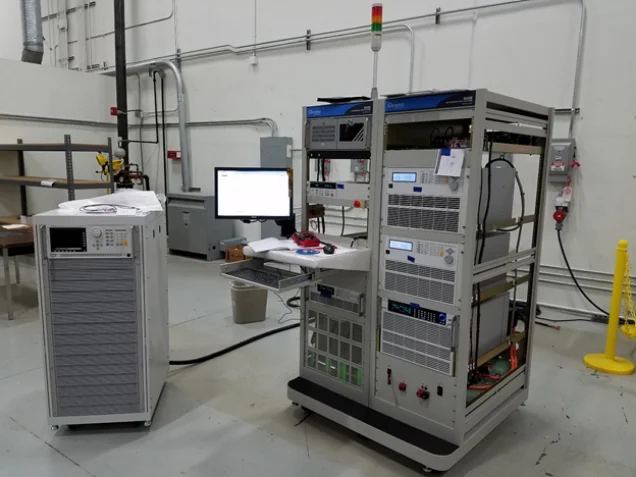How OutBack Power Automated Testing of their New Power Conversion System using Chroma ATE

Device Under Test
OutBack Power ordered two ATEs for manufacturing their new power conversion system (marketed as Skybox Hybrid Energy System) which had the ability to work with battery banks (charge/discharge), power grid and generator inputs, supply power to AC loads, and harvest energy from solar panels.
CSS-471 was made to test and calibrate subassemblies of the product (Subassembly Test Station). CSS-470 was used for burning in completed units (Burn-in Test Station). Two DUTs would be connected to the system where one would work as a source and switch. Resistive load was added to make this setup successful.
The customer came in with incomplete test and calibration procedure which was updated and expanded as the project progressed. The firmware of the DUT control module had to be updated multiple times. We were troubleshooting the product and test set-up for the customer.
Test System
CSS-471 instruments were assembled into two 35U cabinets: 62150H-600-220V, 2 AC loads 63804, 63212A-600-840, Keysight data logger with 20-ch mux. Chroma used standalone AC source 61611 and installed a three relay/resistor plates while the customer provided a control unit mounted on the front of the ATE. All communication was done through the Ethernet.
CSS-470 instruments were installed into a single 35U cabinet: 62150H-600-220V, Keysight data logger with 20-ch mux, two relay plates for switching AC and DC power. Later in the project, connection to the customer provided AC load was made in the back of the system.
OutBack required the ATEs to have a small battery to power up the DUT declining to use a small DC source for that purpose. A 48V 200 Ah lead-acid battery bank was installed in each ATE. The system cabinet floor had to be reinforced by retention brackets in order to secure the batteries; pre-charge circuit was used to prevent contact welding.
Batteries were used to test battery to AC load power conversion capability of the DUT. Charging function was tested with the DC load connected in parallel with the batteries. The DC load in the system was configured to ensure the batteries remained charged. The discharge circuit for the DUT internal high voltage bus was installed inside the cabinet for operator safety.
Results
OutBack’s engineers visited our facility to witness the working system and application development and approved the system. A test report was created in the form of a CVS file and the results were provided to the customer before shipping.